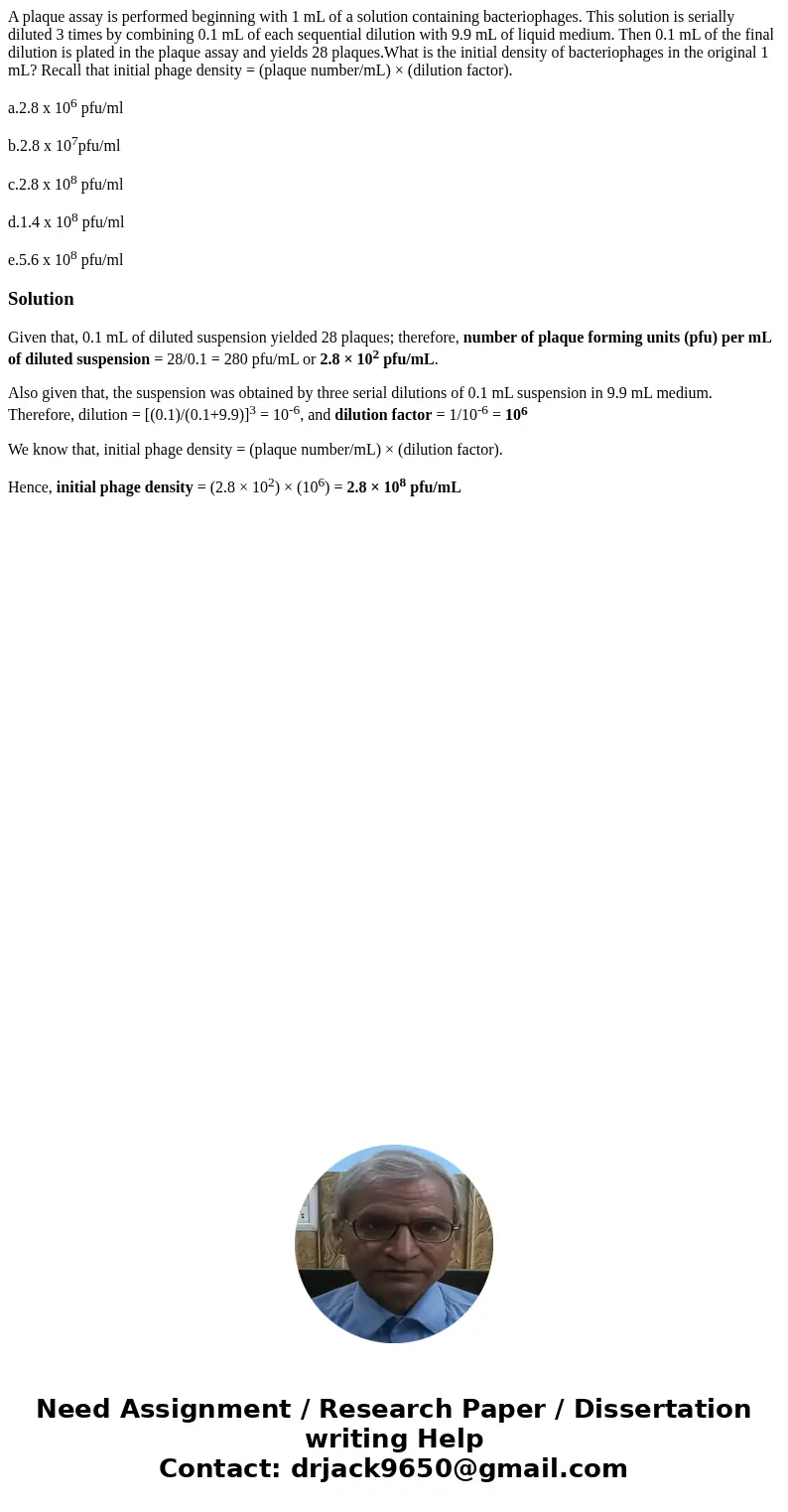A plaque assay is performed beginning with 1 mL of a solutio
A plaque assay is performed beginning with 1 mL of a solution containing bacteriophages. This solution is serially diluted 3 times by combining 0.1 mL of each sequential dilution with 9.9 mL of liquid medium. Then 0.1 mL of the final dilution is plated in the plaque assay and yields 28 plaques.What is the initial density of bacteriophages in the original 1 mL? Recall that initial phage density = (plaque number/mL) × (dilution factor).
a.2.8 x 106 pfu/ml
b.2.8 x 107pfu/ml
c.2.8 x 108 pfu/ml
d.1.4 x 108 pfu/ml
e.5.6 x 108 pfu/ml
Solution
Given that, 0.1 mL of diluted suspension yielded 28 plaques; therefore, number of plaque forming units (pfu) per mL of diluted suspension = 28/0.1 = 280 pfu/mL or 2.8 × 102 pfu/mL.
Also given that, the suspension was obtained by three serial dilutions of 0.1 mL suspension in 9.9 mL medium. Therefore, dilution = [(0.1)/(0.1+9.9)]3 = 10-6, and dilution factor = 1/10-6 = 106
We know that, initial phage density = (plaque number/mL) × (dilution factor).
Hence, initial phage density = (2.8 × 102) × (106) = 2.8 × 108 pfu/mL

 Homework Sourse
Homework Sourse